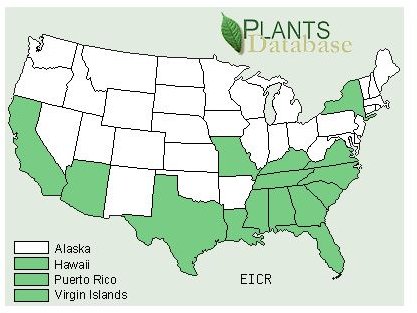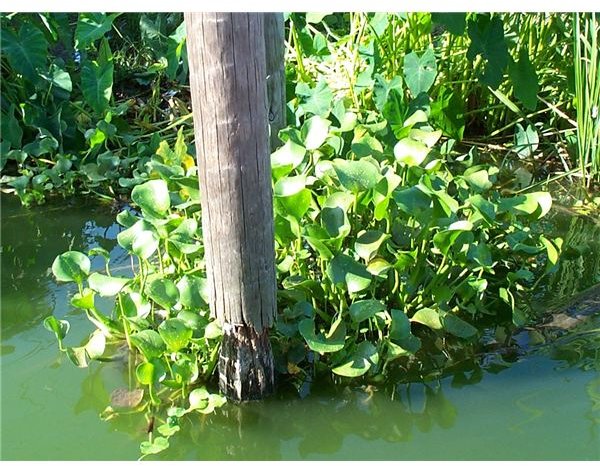Biomass from Water Hyacinths - Potential Yield of Biogas
Biogas? What is it? Regular or Unleaded?
First of all, what is biogas? Specifically, it’s a combination of gases that result from the decomposition of organic matter at the bottom of a lake bed, a swamps, or a landfill. It is an end product of an anaerobic process by which bacteria consumes organic matter creating biogas. This is a combination of gases: 63% methane, 30% CO2, 4% Nitrogen, and 1% Hydrogen Sulfide. This gas can be used as a form of alternative energy.
Water Hyacinth. There’s Plenty of It, So What is It?
Let’s now introduce the water hyacinth (Eichhornia crassipes). This aquatic plant originally came from the Amazon basin and was later introduced to other parts of the world as an ornamental plant for garden ponds. It has proliferated to many parts of the world, and tends to thrive in mostly tropical and sub-tropical climates. It has become an invasive and nuisance plant to the south-eastern U.S. It infests areas causing biodiversity problems and clogging up drains, streams, power plant intakes, and the like.
Scientists Find a Way to Make Use of this Nuisance Plant
As a way to cut down on this plant population, scientists are figuring out how it can be used as an alternative fuel source.
Some places in the world are currently using a method known as anaerobic digestion to process and extract methane gases as an alternative form of energy from biomass. This method is gaining acceptance by communities living in tropical and sub-tropical regions of the world. It’s a practice currently being used with human waste in India, but little study has been done with the water hyacinth. Since this invasive plant is seriously infesting those regions, this method not only justifies the disposal of the plant in the form of anaerobic digestion, but also extracting the methane in the process and using it as fuel for communities. So studies are currently being done on this practice. It’s been determined that the ample abundance of this plant on a year round basis would leave plenty of room for alternative fuel.
However, studies to demonstrate the gas output of the water hyacinth digestion process would require large-scale digesters because traditional digesters could not accommodate the high water volume required as a component for anaerobic digestion.
Data and Analysis
In order for this experiment to work, and to give a more assured representation of the results, a reactor-based method was used.
In an experiment performed in Sahilian West Africa, with six anaerobic digesters, researchers wanted to see how much methane gas could be produced to equate the amount to that of 2.5 kg of firewood which is traditionally used for cooking in a maternity facility. The given in this situation is that 1 cubic meter of biogas (or 1,000 liters) equals 2.5 kg of firewood. In order to meet their cooking needs, 8 cubic meters of biogas/day would be needed.
First of all, 300 kg of dry weight water hyacinth was combined with 1,000 kg of rumen residue in a 1:3 ratio. (The rumen is part of a cow’s stomach.) This combination was diluted with a liquid solution and entered into a digester. This would total 1,300 kg of total biomass.
The equipment used to measure the amount of methane was a hand crafted (water column) pressure gauge.
Data was collected over a 65 day period in the warm season. The total volume produced during that time frame was around 151,000 liters (151 cubic meters) of methane gas extracted from the1,300 kgs of composite biomass accumulated for digestion. This would equal approximately 116 liters of biogas per kg of combined biomass digested.
The experiment was a success. The bioreactor was able to produce 8 cubic meters of biogas per day year round.
So this experiment makes it appear that this method of making alternative fuel would indeed be quite useful. I would expect in poor countries, this would really be in their best interest as opposed to purchasing regular fuel (natural gas) or using fire wood.
Water Hyacinth Distribution

This is a water hyacinth distribution map for the USA. Globally this plant exists in every continent but Europe.
Resource Links
Gaseous Fuels: Biogas and Hydrogen
Water Hycinth: Practical Answers
Kinetic Studies of Biogas Evolved from Water Hyacinth
Field Actions Science Reports: Biogas production using water hyacinths to meet collective energy needs in a sahelian country
This post is part of the series: Biomass
This series will entail the usage of Biomass as a form of alternative energy.
